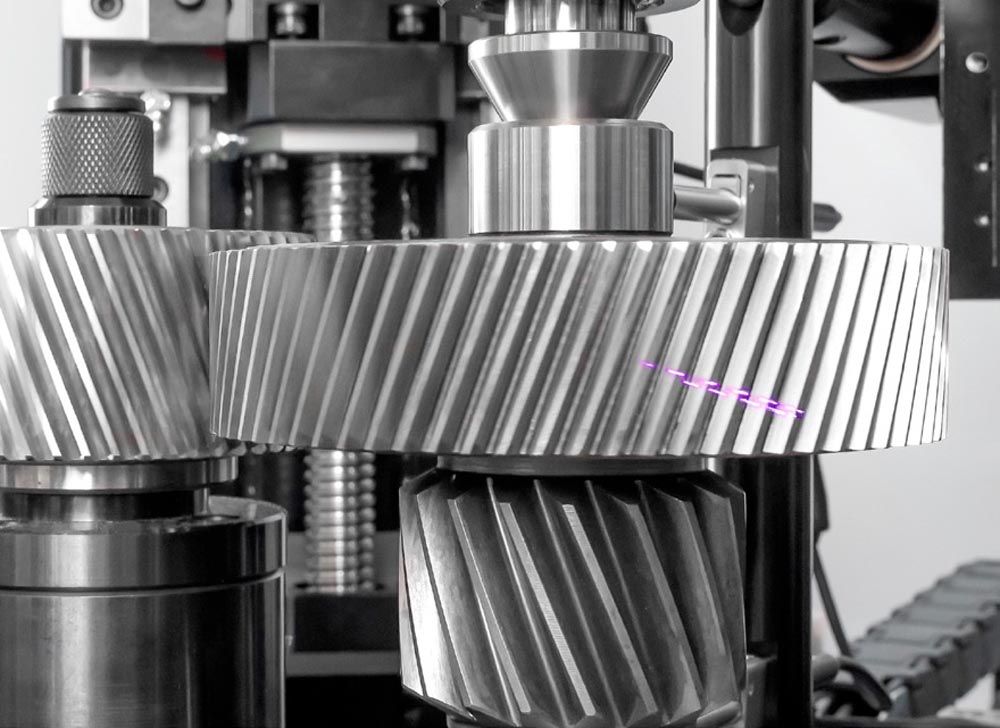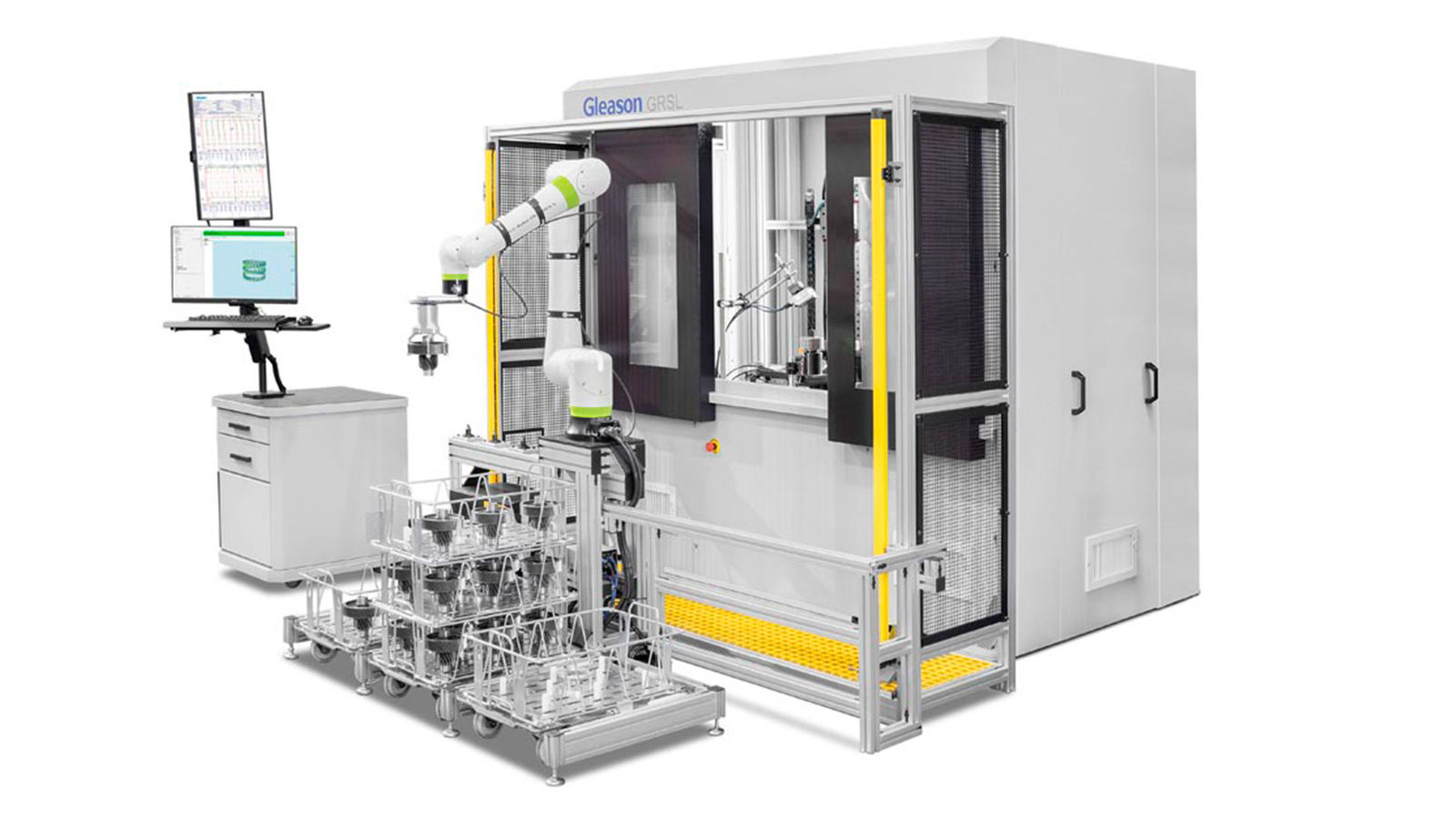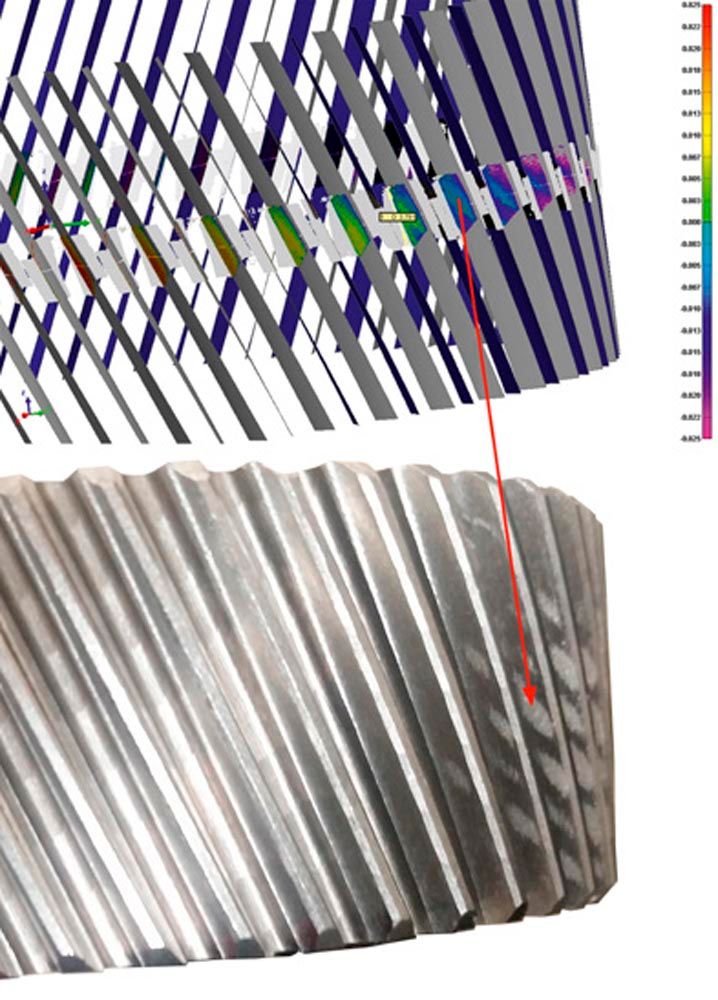GRSL Quality Center: Speeding the Way to Quieter Gears
Gleason’s GRSL Quality Center brings fast gear inspection to the shop floor for higher quality gears
The arrival of Gleason’s Hard Finishing Cell (HFC) in 2018 represented a paradigm shift in the way automotive transmission gears and gears for e-drives, could be produced in high volumes. Now, for the first time, 100 percent inspection of every gear, and every gear tooth was possible in-process, without impacting the high speeds at which these gears need to be hard finished. Identifying, and correcting for, conditions that create unacceptable noise behavior in these gears, on the fly, was finally a reality too. Compare that to the approach gear manufacturers traditionally take. In a typical hard fine finishing operation like continuous generating grinding, it is not unusual to measure only one or two workpieces per dressing cycle or directly after the machine setup. Depending on the dressing cycle, the number of inspected parts corresponds to only about five percent of workpieces produced in total. However, to guarantee almost 100 percent reliability, statistical evaluation is instead used to validate the gears being produced. Typical measuring characteristics can be represented and statistically evaluated on a Gaussian bell curve. By deliberately narrowing down tolerances on the measured components, it is possible to guarantee compliance with the required drawing tolerances with a sufficiently high probability (typically > 99.99994 percent). This method is commonly used for machine and process capability studies and is globally recognized. The machine or process capability values cmk and cpk, frequently taken as a basis, are usually set above 1.67. Statistically, the reject rate is only 0.57 workpieces per 1 million manufactured workpieces, which means that only about 50 percent of the intended drawing tolerances are available as manufacturing tolerances. This situation is aggravated by the fact of increasing quality demands, especially with e-drive gears, due to NVH and other topics leading to increasingly tight tolerances. This high dependency on statistics poses a significant challenge to a growing number of gear manufacturers.

GRSL rolls multiple inspection methods into a single platform: optical inspection of profile, lead, and pitch; DOP and tooth thickness; double flank composite testing; and sophisticated in-process gear noise analysis.
Another significant challenge is the long wait time between part removal for inspection and the actual availability of measured results. Part movement, waiting, and inspection time can easily amount to between 30 to 45 minutes depending on the inspection room capacity. After inspection, a decision must be made as to whether a correction of machine settings is necessary. The implementation of such corrections must be carried out by the machine operator, taking additional time—all while gears, good or bad, are continuously produced.
Gleason’s HFC incorporated a remarkable new inspection solution to address both long-standing issues: the GRSL (Gear Rolling System with Integrated Laser Scanning), featuring a combination of double flank roll testing and laser scanning. GRSL rolled multiple inspection methods into a single platform—optical inspection of profile, lead, and pitch; DOP and tooth thickness; double flank composite testing; and sophisticated in-process gear noise analysis—all performed in just seconds, making it possible to inspect every gear without sacrificing precious cycle time.
GRSL Stands Alone
Fortunately, the many benefits of GRSL aren’t simply confined to HFC application. With the arrival today of the stand-alone GRSL Quality Center any manufacturer can meet their 100 percent inspection requirements, while at the same time taking precious time out of the hard fine finishing and inspection of a wide range of high-precision cylindrical gears with low noise requirements. Furthermore, the GRSL Quality Center is ‘shop hardened’ and designed for installation right on the production floor close to the machines producing parts for inspection. Now, with a single stand-alone GRSL, served by an integrated cobot loader, the manufacturer can eliminate the much more time-consuming, labor-intensive inspection process that typically includes multiple inspection machines (analytical inspection systems, roll testers, DOP gages), skilled operators, and transport between inspection stations. Instead, this single GRSL platform does it all, and in a fraction of the time: optical pitch, lead, and profile inspection for all teeth on a workpiece, as well as dual flank rolling testing including inspection for tooth flank damage, total dual flank working deviation and dual flank working error, functional runout, DOB measurement, average tooth thickness and more. Most significantly, the results of the inspection are available immediately and can be sent back to the production machine in a continuous closed loop so the necessary corrections can be made on the fly, without waiting many minutes, perhaps hours, for inspection results using traditional methods. By inspecting up to 100 percent of parts, manufacturers can monitor trends and apply preventive corrections before parts are even out of tolerance, helping to predict whether a workpiece could cause noise issues within the gearbox after its assembly.









